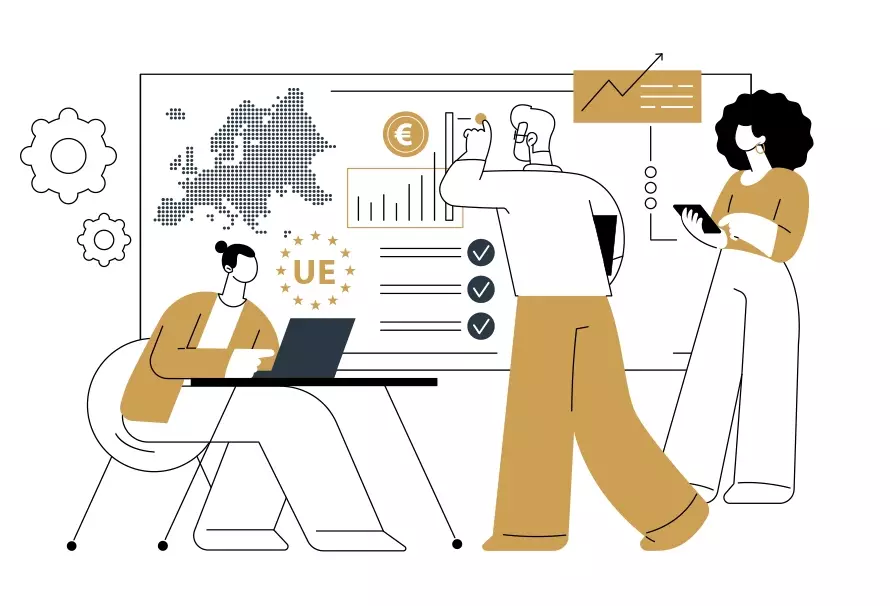Between 2020 and 2025, the market has undergone a transformation that has challenged even the most experienced investors. A combination of external shocks — a global pandemic, energy crises, geopolitical unrest, persistent inflation and rapid monetary tightening — has disrupted the foundations of valuation in private equity. Assumptions that were once relatively stable — such as the cost of capital, valuation multiples, and access to financing — have become far more unpredictable.
In this context, valuing a company is no longer a mechanical exercise. It requires interpreting a shifting environment with both technical precision and investment judgement. For private players — family offices, high-net-worth individuals, and independent investment teams — the challenge is twofold: not only to estimate an asset’s value today, but to assess how that value may evolve under different market conditions.
This article offers an in-depth analysis of how to approach valuation in times of volatility. We’ll examine what has changed, which advanced valuation methods are most effective, real examples from the Spanish market, common pitfalls to avoid, and practical recommendations for investors seeking to navigate uncertainty with confidence.
What changes when valuing companies in uncertain markets?
The first casualty of market volatility is the reliability of deterministic models. In more stable periods, valuation methods can rely on reasonable growth projections, stable margins, fixed discount rates, and multiples based on comparable companies. However, in recent years, these variables have become unstable, and company value has shifted from a fixed figure to a range influenced by external factors.
Traditional valuation techniques — discounted cash flows (DCF), comparable multiples, and sum-of-the-parts (SOTP) — remain valid, but they now require significant recalibration. The WACC must be updated to reflect higher risk premiums, less reliable betas, and rising risk-free rates. Projected cash flows should adopt more conservative assumptions, especially around inflation, demand elasticity, and financing access. Reference multiples must also be applied with greater scrutiny — automatic extrapolations no longer suffice.
Furthermore, macroeconomic uncertainty introduces a broader range of possible outcomes. Relying on a single base case is no longer enough. Today’s valuations must incorporate divergent scenarios, assign probabilities, and assess resilience under each outcome. This is particularly relevant in private equity, where investment horizons are long and exits — via sale, IPO or takeover — often occur under very different conditions.
Specific techniques to adjust valuations amid volatility
Probabilistic scenario modelling
Building multiple valuation scenarios with different probabilities is now essential. Instead of a single forecast, investors should construct at least three cases: base, optimistic and pessimistic. Each must be based on consistent assumptions around growth, margins, investment levels and the macro environment. A weighted average valuation is then calculated based on the probabilities assigned to each case.
For example, during the pandemic, funds modelled V-shaped, U-shaped or even W-shaped recoveries — enabling them to define a realistic valuation range and develop contingency plans accordingly.
Dynamic sensitivity analysis
The classic “±5% variation in revenues” is now inadequate. In today’s environment, broader sensitivity bands (±20% or more) should be tested, and applied to additional variables such as WACC, capex and exit multiples.
Stress test scenarios are particularly useful. For example: What happens if sales fall by 15% for two consecutive years? What if interest rates double in year two? This helps identify the most critical levers and assess the robustness of an investment under adverse conditions.
Monte Carlo simulations
Monte Carlo simulation is the most advanced tool for quantifying risk. It involves assigning probability distributions to key variables and simulating thousands of random outcomes, generating a full distribution of potential valuations. This not only defines a likely range, but also shows the probability of falling below certain thresholds (e.g. P10, P50, P90).
This technique is increasingly used in Spanish and European funds, particularly when variables are correlated (e.g. sales and margins), or when there is significant downside risk to manage.
Refined use of multiples and comparables
In volatile environments, using multiples requires greater selectivity. Forward-looking multiples may be unreliable if they’re based on overly optimistic projections. In such cases, it’s better to rely on adjusted trailing multiples or multi-year averages. Risk premiums or discounts should also be applied based on the asset’s profile: size, liquidity, sector, or regulatory exposure.
Take the EQT bid for Solarpack, where a ~16% discount was applied to the sector average to reflect Spain’s regulatory risk. These contextual adjustments make the comparables method more accurate and credible.
Complementary methods
In uncertain conditions, it becomes worthwhile to include elements such as real options (e.g. deferring or abandoning a project), contingent earn-outs, and custom risk premiums in the discount rate. However, these must be used carefully — if risks are already accounted for through scenario analysis or Monte Carlo, it’s important to avoid double-counting through inflated discounts.
Real-life lessons from private equity in Spain
Recent years in the Spanish market offer valuable insights:
- Takeovers of undervalued listed companies (2020–2021): Following the initial COVID-19 crash, several firms were acquired at attractive multiples. MásMóvil and Solarpack were solid businesses purchased by international funds taking advantage of temporary dips.
- Sectors with record valuations despite uncertainty: Tech, healthcare, software and renewables saw strong demand and high multiples. The sale of Idealista in 2020 for ~€1.3 billion exemplifies this dynamic.
- Market corrections and renegotiations (2022): Higher interest rates and inflation led to deal cancellations, price reductions, and greater use of earn-outs. While the pace of deals slowed, the most prepared funds deployed defensive strategies to preserve value.
- Dynamic revaluation of portfolios: Many GPs applied temporary markdowns in 2020, later reversing them in 2021–2022 as results improved. This active management helped maintain investor confidence and support smarter decision-making.
Common valuation mistakes to avoid today
In volatile markets, the cost of mistakes is higher. Avoid the following:
- Extrapolating pre-COVID trends to a post-COVID world.
- Ignoring structural changes such as regulation, technology or shifts in consumer behaviour.
- Relying blindly on outdated historical data.
- Using only one method (e.g. DCF alone) without triangulating with others.
- Cutting corners on due diligence when more thorough scrutiny is needed.
Key takeaways for investors
At Gala Capital, we recommend the following principles for valuing assets in uncertain times:
- Think in ranges, not absolutes. Always present a valuation range with clear underlying assumptions. Transparency builds trust.
- Focus on high-quality assets with strong fundamentals — predictable cash flows, clear positioning and low debt.
- Incorporate risk tools (scenarios, sensitivities, Monte Carlo) as standard procedure, not optional extras.
- Learn from past mistakes. Use checklists, challenge assumptions, and bring in external experts when needed.
- Be patient and strategic. Wait for the right moment — don’t force investments under unfavourable conditions.
- Build resilient portfolios with diversification by sector, geography and maturity, reducing exposure to asymmetric shocks.
Final thought
Valuing companies in private equity is a living discipline, especially in structurally volatile markets. It’s not just about the numbers — it’s about understanding what lies behind them: risk, opportunity, and future possibilities.
At Gala Capital, we believe the best way to handle uncertainty is not to step back, but to professionalise the process even further — combining advanced techniques with a long-term strategic outlook.




